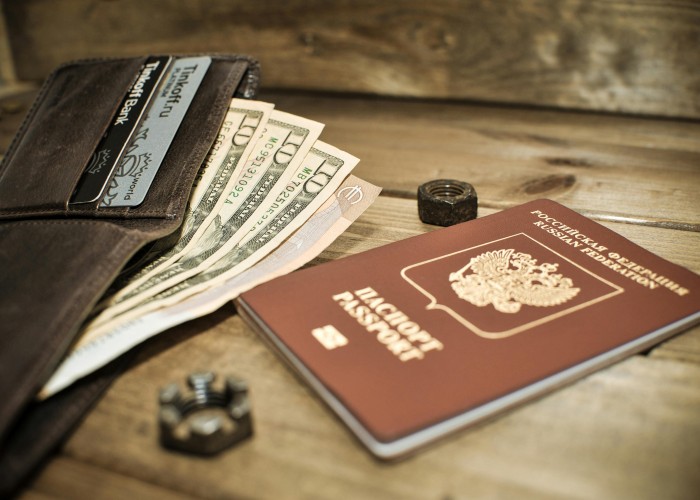Relocating to the United States is a big step, and it brings along plenty of paperwork, planning, and financial decisions. Whether you’re moving for work, study, or family, preparing your finances in advance is essential for a smooth transition. Moving to the USA? Your Complete Financial Checklist for Expats.
In this guide from the Financial Advisor USA Blog, we break down what you need to do before and after moving to the US—from opening a bank account to understanding taxes and insurance. While we’re not a team of certified financial planners or licensed advisors, this blog is here to offer helpful, general financial information for expats and global movers.
Ready to take the next step toward settling in the United States? Let’s walk through your financial checklist.
1. Assess Your Current Financial Situation
Before you pack your bags, take a clear look at your existing financial position. Knowing where you stand will help you make better decisions when it comes to transferring funds, setting up U.S. accounts, or managing international investments.
Here’s what to review:
- Total savings and liquid assets
- Investments in your home country
- Outstanding debts or liabilities
- Monthly expenses and emergency funds
- Currency exchange considerations
Creating a summary of your current financial status gives you clarity and confidence as you make your move.
2. Understand the Cost of Living in the USA
The cost of living in the United States varies widely from city to city. For example, living in New York or San Francisco is significantly more expensive than in places like Austin or Indianapolis.
Things to include in your cost of living estimate:
- Rent or mortgage
- Utilities and internet
- Food and groceries
- Transportation
- Healthcare
- Childcare or education if applicable
Many expats are surprised by the cost of healthcare or the wide variance in housing prices. Doing the math early helps avoid budget shocks later.
3. Open a U.S. Bank Account
Having a local bank account is a must if you’re moving to the USA. It allows you to receive your salary, pay bills, and manage daily expenses efficiently.
Documents typically required:
- Passport and visa
- Proof of U.S. address (a lease agreement or utility bill)
- Social Security Number (SSN) or Individual Taxpayer Identification Number (ITIN), if available
If you don’t yet have an SSN or ITIN, some banks offer non-resident accounts, though they may come with more restrictions.
4. Plan for Currency Exchange and Money Transfers
When moving large amounts of money internationally, using your regular bank might not be the most cost-effective method. Look into foreign exchange services or international money transfer platforms that offer lower fees and better exchange rates.
This can save you a considerable amount, especially if you’re transferring funds for rent deposits, tuition, or investment purposes.
5. Understand U.S. Taxes for Expats
One of the most important steps in your move is understanding the U.S. tax system. The United States has a complex tax structure that includes federal, state, and sometimes local income taxes.
Key things to note:
- U.S. tax year runs from January 1 to December 31
- You’ll need to file taxes if you earn income in the U.S.
- Expats may be subject to tax on global income, depending on visa type and residence status
- Tax treaties may apply between your home country and the U.S.
Consider seeking guidance from a financial consultant or investment advisor familiar with international taxation, even if just for an initial consultation. You can find more general guidance on topics like this throughout our site at About Us. Moving to the USA? Your Complete Financial Checklist for Expats.
6. Build a U.S. Credit History
Your international credit score doesn’t transfer to the U.S., so you’ll likely start with no credit history. Since credit plays a major role in renting apartments, applying for credit cards, or securing loans, it’s smart to start building it early.
Steps to get started:
- Apply for a secured credit card or credit builder loan
- Use your credit responsibly and pay in full
- Keep your credit utilization low
- Monitor your credit score regularly
Over time, a solid credit history will help you access better interest rates and financial products.
7. Set Up Health Insurance
Healthcare in the U.S. can be expensive without insurance. As an expat, it’s essential to have health coverage lined up before or immediately upon arrival.
Options include:
- Employer-provided health insurance
- Private insurance through the Health Insurance Marketplace
- International expat insurance plans
Understand what your insurance covers, how deductibles work, and what you’ll pay out-of-pocket. If unsure, compare plans carefully and budget accordingly.
8. Evaluate Your Retirement Plans
If you have retirement savings in your home country, consider what to do with them. Should you leave them as is, transfer to a U.S.-based account, or manage them from abroad?
Also, look into U.S.-based retirement options like:
- 401(k) plans (usually employer-sponsored)
- Individual Retirement Accounts (IRA)
Although we do not offer personal financial advice, it’s wise to speak with a chartered financial advisor or certified financial planner to discuss international retirement planning.
9. Review Life and Disability Insurance Needs
Depending on your visa type, job, and family situation, you may want to explore life and disability insurance. If you have dependents or significant financial responsibilities, insurance can offer long-term security.
Some employers include these benefits, while others do not. Independent policies are available from private insurers. Moving to the USA? Your Complete Financial Checklist for Expats.
10. Organize Your Financial Documents
Before your move, gather all critical financial documents, both physical and digital:
- Bank statements
- Tax returns
- Insurance policies
- Pay slips
- Investment records
- Copies of signed agreements (rental, employment, etc.)
Having easy access to these documents simplifies account openings, credit checks, and more. Keep them secure, but easily retrievable.
11. Know the Financial Advisor Landscape
Even though this blog doesn’t offer personal financial services, understanding what to look for in an advisor is helpful if you decide to hire one.
There are several types of advisors in the U.S., including:
- Certified Financial Advisor: Certified through programs like CFP (Certified Financial Planner)
- Chartered Financial Advisor: Specialized credentials in various areas of finance
- Independent Financial Advisor: Offers advice without being tied to a specific company
- Investment Advisor: Focuses on managing investment portfolios
- Financial Consultant: Often works across areas including budgeting, debt, and retirement
Fees vary, and the financial advisor cost depends on the complexity of your finances. Some charge hourly rates, while others take a percentage of your assets.
If you’re researching how to choose the best financial advisors, focus on credentials, experience with expats, and transparency about costs.
12. Create a U.S. Budget and Emergency Fund
After all the setup, it’s time to map out your first few months in the U.S. financially. Start with a simple monthly budget based on your new income and living expenses. Include rent, transport, groceries, insurance, and some buffer for unexpected costs.
Aim to build an emergency fund of 3 to 6 months’ worth of expenses. This is especially important when adjusting to a new country, job, and lifestyle.
Final Thoughts
Moving to a new country comes with challenges, and money management is one of the most critical. Having a financial plan before you land in the U.S. gives you peace of mind and sets you up for long-term success. Moving to the USA? Your Complete Financial Checklist for Expats.





Leave a Reply